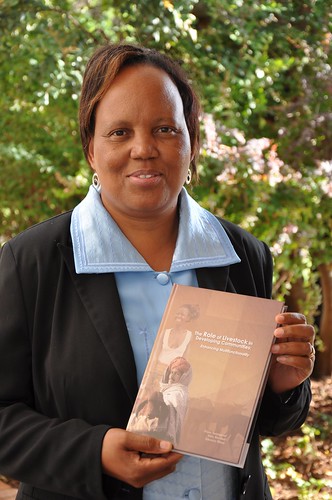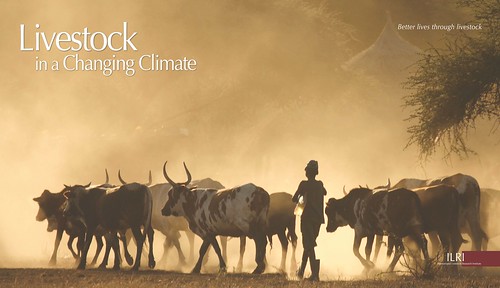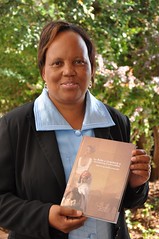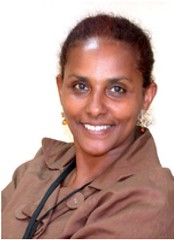Farmer Noor Ali ploughs his field in Brahampur, India. A better understanding of the multiple roles played by livestock in developing communities will help improve livestock production and accelerate economic development in poor countries (photo credit: ILRI/Mann).
Following the 2008/9 global food price crisis, agricultural experts agree that more investment in food production is needed to meet increasing world food demand. Global food security, however, is unlikely to be achieved unless livestock production is made more efficient.
Farm animals fulfil an important role in developing communities, where many people depend on mixed crop-and-livestock farming systems or live in marginal areas where animal agriculture is the only means of producing food. For most of the world’s poorest, about 600 million people, animals provide not only milk, meat and eggs but are also a source of draught power and manure for crop farming, resources that help livestock keepers diversify their income.
For many of these livestock keepers, greater investment in livestock production would make a significant difference in helping them come out of poverty by increasing their sources of food and income.
The role of livestock in developing communities: Enhancing multifunctionality, a new book co-published by the University of the Free State South Africa, the Technical Centre for Agricultural and Rural Cooperation (CTA) and the International Livestock Research Institute (ILRI), argues that a better understanding of the multiple roles played by livestock in developing communities will help decision-makers and development practitioners not only improve the livestock sector’s efficiency and productivity but, through that, accelerate economic development in poor countries.
Livestock production in the developing world faces the challenge of how to meet an increasing demand for meat, milk and eggs with limited land, water and other natural resources, say two of the book’s authors, Siboniso Moyo, ILRI’s representative in southern Africa, and Frans Swanepoel, senior director of research and professor of sustainable agriculture at the University of the Free State, in Bloemfontein, South Africa.
Examining trends and drivers in livestock production in developing communities, the authors say that the smallholder livestock sector needs to adapt to increasing population and urbanization and the other changes coming in the wake of these changes, such as rapidly changing livestock systems, environments, climates and consumption patterns. All these changes, they say, require stronger policies and institutions.
The authors propose strengthening institutions and policies, providing livestock owners with credit, improving veterinary services, increasing the delivery and uptake of livestock technologies and improving the infrastructure of livestock markets.
The increasing demand for livestock in developing countries due to rising populations and incomes offers many poor livestock keepers new opportunities to raise their incomes by increasing the production and marketing of their livestock products. The main questions are how to include poor people in this livestock boom, and how to help smallholders increase their livestock production while making more efficient use of their land, water and native stock.
Three other big challenges of the fast-changing livestock sector in poor countries are finding ways to feed the increasing numbers of animals in the face of diminishing natural resources, developing diagnostics and vaccines to better protect animals against neglected tropical diseases of livestock as well as zoonotic diseases, which are shared by livestock and people, and finding optimal ways for small-scale livestock keepers to adapt to climate change and reduce their production of greenhouse gases.
The authors, however, note that rising prices of livestock products can open up new market opportunities for small-scale producers, though this alone will not guarantee their competitiveness. Without support, many smallholder livestock producers, especially those in marginal areas, with limited access to information and knowledge, will find it difficult to compete with larger livestock operations in meeting the increasing demand for livestock products while also meeting the more stringent food quality and safety standards the new market is demanding.
‘The livestock sector is an important part of developing communities and the multiple roles that livestock play in meeting the livelihoods of people need to be enhanced for the sector to continue contributing to poverty reduction,’ the book says. ‘Research and development agencies need to come together to address these challenges comprehensively.’
This book provides a list of ‘Livestock development projects that make a difference’ and ways to promote gender equality and empower women through livestock development. Watch for more highlights from the book in upcoming ILRI news articles.
Read more about The role of livestock in developing communities: Enhancing multifunctionality






